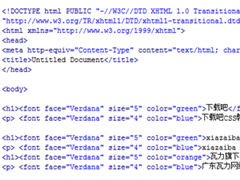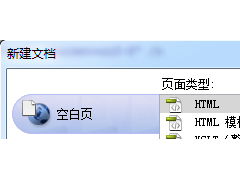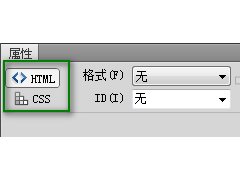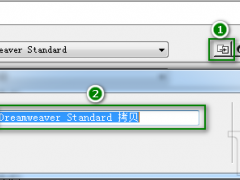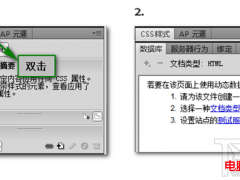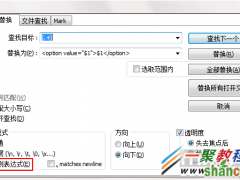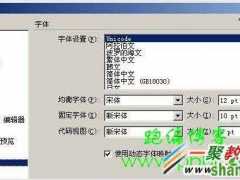本文实例讲述了python实现DES加密解密方法。分享给大家供大家参考。具体分析如下:
实现功能:加密中文等字符串
密钥与明文可以不等长
这里只贴代码,加密过程可以自己百度,此处python代码没有优化
1. desstruct.py DES加密中要使用的结构体
?
1 2 3 4 5 6 7 8 9 10 11 12 13 14 15 16 17 18 19 20 21 22 23 24 25 26 27 28 29 30 31 32 33 34 35 36 37 38 39 40 41 42 43 44 45 46 47 48 49 50 51 52 53 54 55 56 57 58 59 60 61 62 63 64 65 66 67 68 69 70 71 72 73 ip= (58, 50, 42, 34, 26, 18, 10, 2, 60, 52, 44, 36, 28, 20, 12, 4, 62, 54, 46, 38, 30, 22, 14, 6, 64, 56, 48, 40, 32, 24, 16, 8, 57, 49, 41, 33, 25, 17, 9 , 1, 59, 51, 43, 35, 27, 19, 11, 3, 61, 53, 45, 37, 29, 21, 13, 5, 63, 55, 47, 39, 31, 23, 15, 7) ip_1=(40, 8, 48, 16, 56, 24, 64, 32, 39, 7, 47, 15, 55, 23, 63, 31, 38, 6, 46, 14, 54, 22, 62, 30, 37, 5, 45, 13, 53, 21, 61, 29, 36, 4, 44, 12, 52, 20, 60, 28, 35, 3, 43, 11, 51, 19, 59, 27, 34, 2, 42, 10, 50, 18, 58, 26, 33, 1, 41, 9, 49, 17, 57, 25) e =(32, 1, 2, 3, 4, 5, 4, 5, 6, 7, 8, 9, 8, 9, 10, 11, 12,13, 12, 13, 14, 15, 16, 17, 16,17, 18, 19, 20, 21, 20, 21, 22, 23, 24, 25,24, 25, 26, 27, 28, 29,28, 29, 30, 31, 32, 1) p=(16, 7, 20, 21, 29, 12, 28, 17, 1, 15, 23, 26, 5, 18, 31, 10, 2, 8, 24, 14, 32, 27, 3, 9, 19, 13, 30, 6, 22, 11, 4, 25) s=[ [[14, 4, 13, 1, 2, 15, 11, 8, 3, 10, 6, 12, 5, 9, 0, 7], [0, 15, 7, 4, 14, 2, 13, 1, 10, 6, 12, 11, 9, 5, 3, 8], [4, 1, 14, 8, 13, 6, 2, 11, 15, 12, 9, 7, 3, 10, 5, 0], [15, 12, 8, 2, 4, 9, 1, 7, 5, 11, 3, 14, 10, 0, 6, 13]], [[15, 1, 8, 14, 6, 11, 3, 4, 9, 7, 2, 13, 12, 0, 5, 10], [3, 13, 4, 7, 15, 2, 8, 14, 12, 0, 1, 10, 6, 9, 11, 5], [0, 14, 7, 11, 10, 4, 13, 1, 5, 8, 12, 6, 9, 3, 2, 15], [13, 8, 10, 1, 3, 15, 4, 2, 11, 6, 7, 12, 0, 5, 14, 9]], [[10, 0, 9, 14, 6, 3, 15, 5, 1, 13, 12, 7, 11, 4, 2, 8], [13, 7, 0, 9, 3, 4, 6, 10, 2, 8, 5, 14, 12, 11, 15, 1], [13, 6, 4, 9, 8, 15, 3, 0, 11, 1, 2, 12, 5, 10, 14, 7], [1, 10, 13, 0, 6, 9, 8, 7, 4, 15, 14, 3, 11, 5, 2, 12]], [[7, 13, 14, 3, 0, 6, 9, 10, 1, 2, 8, 5, 11, 12, 4, 15], [13, 8, 11, 5, 6, 15, 0, 3, 4, 7, 2, 12, 1, 10, 14,9], [10, 6, 9, 0, 12, 11, 7, 13, 15, 1, 3, 14, 5, 2, 8, 4], [3, 15, 0, 6, 10, 1, 13, 8, 9, 4, 5, 11, 12, 7, 2, 14]], [[2, 12, 4, 1, 7, 10, 11, 6, 8, 5, 3, 15, 13, 0, 14, 9], [14, 11, 2, 12, 4, 7, 13, 1, 5, 0, 15, 10, 3, 9, 8, 6], [4, 2, 1, 11, 10, 13, 7, 8, 15, 9, 12, 5, 6, 3, 0, 14], [11, 8, 12, 7, 1, 14, 2, 13, 6, 15, 0, 9, 10, 4, 5, 3]], [[12, 1, 10, 15, 9, 2, 6, 8, 0, 13, 3, 4, 14, 7, 5, 11], [10, 15, 4, 2, 7, 12, 9, 5, 6, 1, 13, 14, 0, 11, 3, 8], [9, 14, 15, 5, 2, 8, 12, 3, 7, 0, 4, 10, 1, 13, 11, 6], [4, 3, 2, 12, 9, 5, 15, 10, 11, 14, 1, 7, 6, 0, 8, 13]], [[4, 11, 2, 14, 15, 0, 8, 13, 3, 12, 9, 7, 5, 10, 6, 1], [13, 0, 11, 7, 4, 9, 1, 10, 14, 3, 5, 12, 2, 15, 8, 6], [1, 4, 11, 13, 12, 3, 7, 14, 10, 15, 6, 8, 0, 5, 9, 2], [6, 11, 13, 8, 1, 4, 10, 7, 9, 5, 0, 15, 14, 2, 3, 12]], [[13, 2, 8, 4, 6, 15, 11, 1, 10, 9, 3, 14, 5, 0, 12, 7], [1, 15, 13, 8, 10, 3, 7, 4, 12, 5, 6, 11, 0, 14, 9, 2], [7, 11, 4, 1, 9, 12, 14, 2, 0, 6, 10, 13, 15, 3, 5, 8], [2, 1, 14, 7, 4, 10, 8, 13, 15, 12, 9, 0, 3, 5, 6, 11]]] pc1=(57, 49, 41, 33, 25, 17, 9, 1, 58, 50, 42, 34, 26, 18, 10, 2, 59, 51, 43, 35, 27, 19, 11, 3, 60, 52, 44, 36, 63, 55, 47, 39, 31, 33, 15, 7, 62, 54, 46, 38, 30, 22, 14, 6, 61, 53, 45, 37, 29, 21, 13, 5, 28, 20, 12, 4); pc2= (14, 17, 11, 24, 1, 5, 3, 28, 15, 6, 21, 10, 23, 19, 12, 4, 26, 8, 16, 7, 27, 20, 13, 2, 41, 52, 31, 37, 47, 55, 30, 40, 51, 45, 33, 48, 44, 49, 39, 56, 34, 53, 46, 42, 50, 36, 29, 32) d = ( 1, 1, 2, 2, 2, 2, 2, 2, 1, 2, 2, 2, 2, 2, 2, 1)2. des.py 加密文件
?
1 2 3 4 5 6 7 8 9 10 11 12 13 14 15 16 17 18 19 20 21 22 23 24 25 26 27 28 29 30 31 32 33 34 35 36 37 38 39 40 41 42 43 44 45 46 47 48 49 50 51 52 53 54 55 56 57 58 59 60 61 62 63 64 65 66 67 68 69 70 71 72 73 74 75 76 77 78 79 80 81 82 83 84 85 86 87 88 89 90 91 92 93 94 95 96 97 98 99 100 101 102 103 104 105 106 107 108 109 110 111 112 113 114 115 116 117 118 119 120 121 122 123 124 125 126 127 128 129 130 131 132 133 134 135 136 137 138 139 140 141 142 143 144 145 146 147 148 149 150 151 152 153 154 155 156 157 158 159 160 161 162 163 164 165 166 167 168 169 170 #_*_ coding:utf-8 _*_ #!/usr/bin/env python #Filename:des.py from desstruct import * import re __all__=['desencode'] class DES(): '''des 加密''' def __init__(self): pass #加密 def code(self,from_code,key,code_len,key_len): output="" trun_len=0 #将密文和密钥转换为二进制 code_string=self._functionCharToA(from_code,code_len) code_key=self._functionCharToA(key,key_len) #如果密钥长度不是16的整数倍则以增加0的方式变为16的整数倍 if code_len%16!=0: real_len=(code_len/16)*16+16 else: real_len=code_len if key_len%16!=0: key_len=(key_len/16)*16+16 key_len*=4 #每个16进制占4位 trun_len=4*real_len #对每64位进行一次加密 for i in range(0,trun_len,64): run_code=code_string[i:i+64] l=i%key_len run_key=code_key[l:l+64] #64位明文、密钥初始置换 run_code= self._codefirstchange(run_code) run_key= self._keyfirstchange(run_key) #16次迭代 for j in range(16): #取出明文左右32位 code_r=run_code[32:64] code_l=run_code[0:32] #64左右交换 run_code=code_r #右边32位扩展置换 code_r= self._functionE(code_r) #获取本轮子密钥 key_l=run_key[0:28] key_r=run_key[28:56] key_l=key_l[d[j]:28]+key_l[0:d[j]] key_r=key_r[d[j]:28]+key_r[0:d[j]] run_key=key_l+key_r key_y= self._functionKeySecondChange(run_key) #异或 code_r= self._codeyihuo(code_r,key_y) #S盒代替/选择 code_r= self._functionS(code_r) #P转换 code_r= self._functionP(code_r) #异或 code_r= self._codeyihuo(code_l,code_r) run_code+=code_r #32互换 code_r=run_code[32:64] code_l=run_code[0:32] run_code=code_r+code_l #将二进制转换为16进制、逆初始置换 output+=self._functionCodeChange(run_code) return output #异或 def _codeyihuo(self,code,key): code_len=len(key) return_list='' for i in range(code_len): if code[i]==key[i]: return_list+='0' else: return_list+='1' return return_list #密文或明文初始置换 def _codefirstchange(self,code): changed_code='' for i in range(64): changed_code+=code[ip[i]-1] return changed_code #密钥初始置换 def _keyfirstchange (self,key): changed_key='' for i in range(56): changed_key+=key[pc1[i]-1] return changed_key #逆初始置换 def _functionCodeChange(self, code): lens=len(code)/4 return_list='' for i in range(lens): list='' for j in range(4): list+=code[ip_1[i*4+j]-1] return_list+="%x" %int(list,2) return return_list #扩展置换 def _functionE(self,code): return_list='' for i in range(48): return_list+=code[e[i]-1] return return_list #置换P def _functionP(self,code): return_list='' for i in range(32): return_list+=code[p[i]-1] return return_list #S盒代替选择置换 def _functionS(self, key): return_list='' for i in range(8): row=int( str(key[i*6])+str(key[i*6+5]),2) raw=int(str( key[i*6+1])+str(key[i*6+2])+str(key[i*6+3])+str(key[i*6+4]),2) return_list+=self._functionTos(s[i][row][raw],4) return return_list #密钥置换选择2 def _functionKeySecondChange(self,key): return_list='' for i in range(48): return_list+=key[pc2[i]-1] return return_list #将十六进制转换为二进制字符串 def _functionCharToA(self,code,lens): return_code='' lens=lens%16 for key in code: code_ord=int(key,16) return_code+=self._functionTos(code_ord,4) if lens!=0: return_code+='0'*(16-lens)*4 return return_code #二进制转换 def _functionTos(self,o,lens): return_code='' for i in range(lens): return_code=str(o>>i &1)+return_code return return_code #将unicode字符转换为16进制 def tohex(string): return_string='' for i in string: return_string+="%02x"%ord(i) return return_string def tounicode(string): return_string='' string_len=len(string) for i in range(0,string_len,2): return_string+=chr(int(string[i:i+2],16)) return return_string #入口函数 def desencode(from_code,key): #转换为16进制 from_code=tohex(from_code) key=tohex(key) des=DES() key_len=len(key) string_len=len(from_code) if string_len<1 or key_len<1: print 'error input' return False key_code= des.code(from_code,key,string_len,key_len) return key_code #测试 if __name__ == '__main__': print desencode('我是12345678刘就是我abcdwfd','0f1571c947刘') #返回密文为: 84148584371a6a1fe99e1da0ce1e34649b88ed15098e8aa4b8eb0bf24885c6583. 解密文件
?
1 2 3 4 5 6 7 8 9 10 11 12 13 14 15 16 17 18 19 20 21 22 23 24 25 26 27 28 29 30 31 32 33 34 35 36 37 38 39 40 41 42 43 44 45 46 47 48 49 50 51 52 53 54 55 56 57 58 59 60 61 62 63 64 65 66 67 68 69 70 71 72 73 74 75 76 77 78 79 80 81 82 83 84 85 86 87 88 89 90 91 92 93 94 95 96 97 98 99 100 101 102 103 104 105 106 107 108 109 110 111 112 113 114 115 116 117 118 119 120 121 122 123 124 125 126 127 128 129 130 131 132 133 134 135 136 137 138 139 140 141 142 143 144 145 146 147 148 149 150 151 152 153 154 155 156 157 158 159 160 161 162 163 164 165 166 167 168 169 170 171 172 173 174 175 176 177 178 179 180 #_*_coding:utf-8_*_ #!/usr/bin/env python #Filename:des.py from desstruct import * import re __all__=['desdecode'] class DES(): '''解密函数,DES加密与解密的方法相差不大 只是在解密的时候所用的子密钥与加密的子密钥相反 ''' def __init__(self): pass def decode(self,string,key,key_len,string_len): output="" trun_len=0 num=0 #将密文转换为二进制 code_string=self._functionCharToA(string,string_len) #获取字密钥 code_key=self._getkey(key,key_len) #如果密钥长度不是16的整数倍则以增加0的方式变为16的整数倍 real_len=(key_len/16)+1 if key_len%16!=0 else key_len/16 trun_len=string_len*4 #对每64位进行一次加密 for i in range(0,trun_len,64): run_code=code_string[i:i+64] run_key=code_key[num%real_len] #64位明文初始置换 run_code= self._codefirstchange(run_code) #16次迭代 for j in range(16): code_r=run_code[32:64] code_l=run_code[0:32] #64左右交换 run_code=code_r #右边32位扩展置换 code_r= self._functionE(code_r) #获取本轮子密钥 key_y=run_key[15-j] #异或 code_r= self._codeyihuo(code_r,key_y) #S盒代替/选择 code_r= self._functionS(code_r) #P转换 code_r= self._functionP(code_r) #异或 code_r= self._codeyihuo(code_l,code_r) run_code+=code_r num+=1 #32互换 code_r=run_code[32:64] code_l=run_code[0:32] run_code=code_r+code_l #将二进制转换为16进制、逆初始置换 output+=self._functionCodeChange(run_code) return output #获取子密钥 def _getkey(self,key,key_len): #将密钥转换为二进制 code_key=self._functionCharToA(key,key_len) a=['']*16 real_len=(key_len/16)*16+16 if key_len%16!=0 else key_len b=['']*(real_len/16) for i in range(real_len/16): b[i]=a[:] num=0 trun_len=4*key_len for i in range(0,trun_len,64): run_key=code_key[i:i+64] run_key= self._keyfirstchange(run_key) for j in range(16): key_l=run_key[0:28] key_r=run_key[28:56] key_l=key_l[d[j]:28]+key_l[0:d[j]] key_r=key_r[d[j]:28]+key_r[0:d[j]] run_key=key_l+key_r key_y= self._functionKeySecondChange(run_key) b[num][j]=key_y[:] num+=1 return b #异或 def _codeyihuo(self,code,key): code_len=len(key) return_list='' for i in range(code_len): if code[i]==key[i]: return_list+='0' else: return_list+='1' return return_list #密文或明文初始置换 def _codefirstchange(self,code): changed_code='' for i in range(64): changed_code+=code[ip[i]-1] return changed_code #密钥初始置换 def _keyfirstchange (self,key): changed_key='' for i in range(56): changed_key+=key[pc1[i]-1] return changed_key #逆初始置换 def _functionCodeChange(self, code): return_list='' for i in range(16): list='' for j in range(4): list+=code[ip_1[i*4+j]-1] return_list+="%x" %int(list,2) return return_list #扩展置换 def _functionE(self,code): return_list='' for i in range(48): return_list+=code[e[i]-1] return return_list #置换P def _functionP(self,code): return_list='' for i in range(32): return_list+=code[p[i]-1] return return_list #S盒代替选择置换 def _functionS(self, key): return_list='' for i in range(8): row=int( str(key[i*6])+str(key[i*6+5]),2) raw=int(str( key[i*6+1])+str(key[i*6+2])+str(key[i*6+3])+str(key[i*6+4]),2) return_list+=self._functionTos(s[i][row][raw],4) return return_list #密钥置换选择2 def _functionKeySecondChange(self,key): return_list='' for i in range(48): return_list+=key[pc2[i]-1] return return_list #将十六进制转换为二进制字符串 def _functionCharToA(self,code,lens): return_code='' lens=lens%16 for key in code: code_ord=int(key,16) return_code+=self._functionTos(code_ord,4) if lens!=0: return_code+='0'*(16-lens)*4 return return_code #二进制转换 def _functionTos(self,o,lens): return_code='' for i in range(lens): return_code=str(o>>i &1)+return_code return return_code #将unicode字符转换为16进制 def tohex(string): return_string='' for i in string: return_string+="%02x"%ord(i) return return_string def tounicode(string): return_string='' string_len=len(string) for i in range(0,string_len,2): return_string+=chr(int(string[i:i+2],16)) return return_string #入口函数 def desdecode(from_code,key): key=tohex(key) des=DES() key_len=len(key) string_len=len(from_code) if string_len%16!=0: return False if string_len<1 or key_len<1: return False key_code= des.decode(from_code,key,key_len,string_len) return tounicode(key_code) #测试 if __name__ == '__main__': print desdecode('84148584371a6a1fe99e1da0ce1e34649b88ed15098e8aa4b8eb0bf24885c658','0f1571c947刘'解密后为: 我是12345678刘就是我abcdwfd
希望本文所述对大家的Python程序设计有所帮助。




